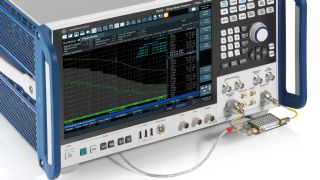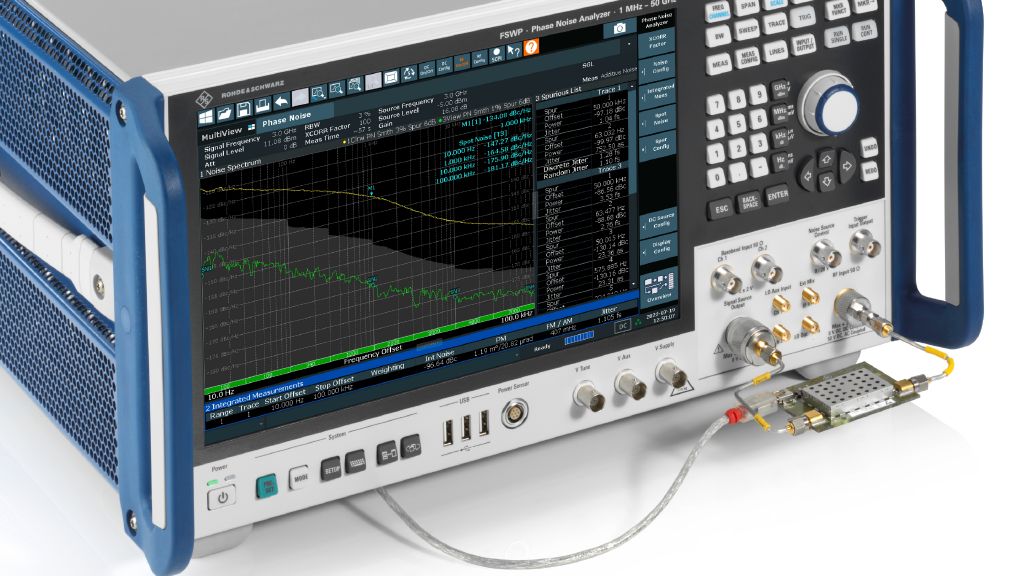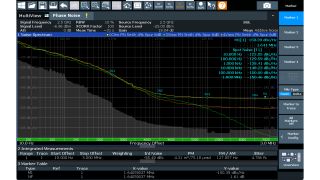Rohde & Schwarz solution
The phase noise for a device is closely tied to the noise figure. Noise contributors for an amplifier can be broadly seen in the 1/f flicker noise along with wideband noise beyond the flicker knee. Since a noise figure indicates the wideband noise generated by a device, a wideband phase noise measurement can be used to calculate the noise figure. The R&S®FSWP signal source analyzer can help to vary DUT drive levels to better understand the additive/residual phase noise and noise figure performance for a device under varying operating conditions.
The noise figure (NF) can be calculated from a phase noise result using the following equation:
NF = L(f) – Nth + Pin
Where:
L(f): phase noise measured at a specified offset in dBm (1Hz)
Nth: thermal phase noise (–177 dBm (1 Hz))
Pin: calibrated signal level applied to DUT
Example
The small-signal noise figure for an amplifier was measured as 1.9 dB at 1900 MHz using the Y-factor method. The phase noise method can be used to calculate the amplifier noise figure for varying input levels.








